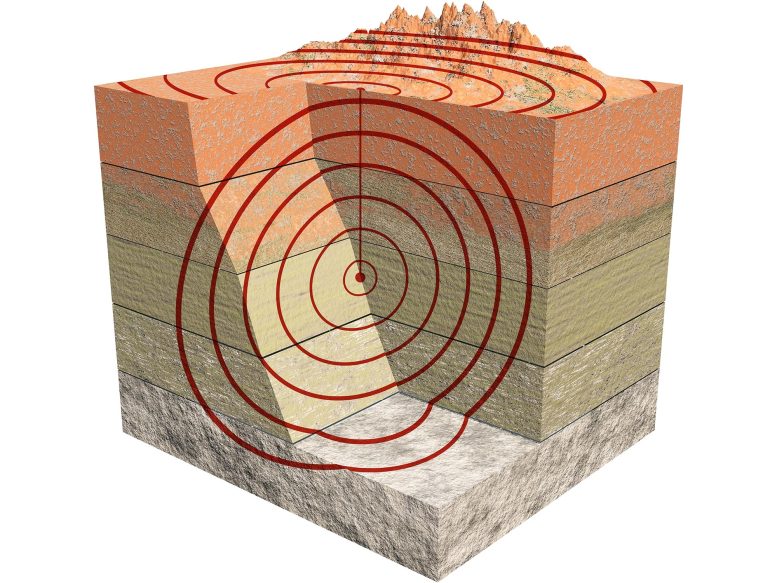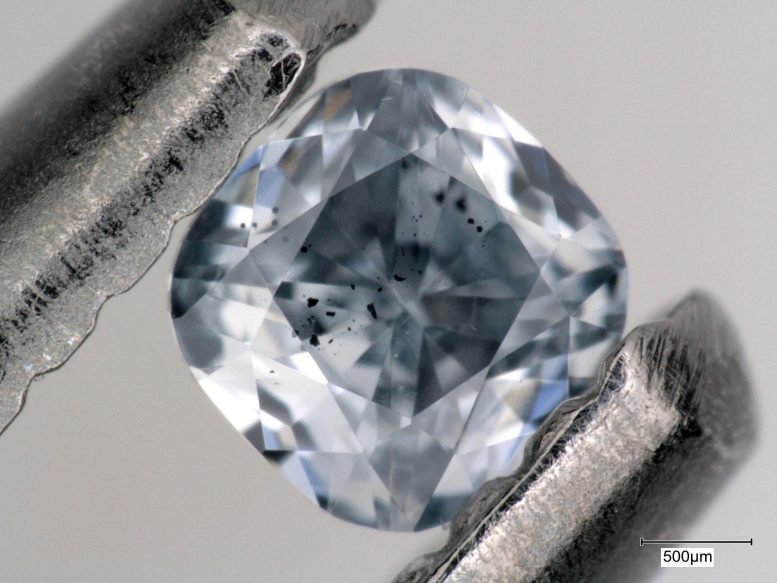
What Can Deep Diamonds Tell Us About Deep Earthquakes?
Diamonds that formed deep in the Earth could help seismologists answer a decades-old question: could fluids play a role in generating earthquakes at depths where high pressure should keep brittle failure from happening?
Fluid-assisted faulting in subducted slabs 300 to 700 kilometers (~180 to 435 miles) deep, in the transition zone between upper and lower mantle, is one process that might explain deep earthquakes. But good evidence for water or other fluids associated with these slabs based on samples was scarce until recently, according to Steven Shirey of the Carnegie Institution for Science.
Now, studies of diamonds that formed in the transition zone provide evidence of fluids carried by subducted slabs. Along with new subduction zone modeling, these diamonds make it clear that fluids can’t be ignored in the story of deep earthquake generation, Shirey said at the Seismological Society of America’s Annual Meeting.
Subducting Slabs and the Transport of Water
Not all deep earthquakes have to involve water, but modeling by Shirey and his colleagues suggests that some subducting slabs remain cold enough to hold on to and transport water all the way to the bottom of the transition zone. Deep earthquakes, occurring 500 to 700 kilometers (310 to 430 miles) below the Earth’s surface, seem to only happen in these slabs that can transport water or that can carry carbonate deep enough to trigger melting, they found.

At that depth, water or carbonate fluids could be triggering the earthquakes, or the earthquakes could be triggering fluid release—or both things could be happening, Shirey said.
“I think it’s up to the seismological community at this point to try to understand why fluids would be important,” he said. “We know fluids are down there, we know they’re moving, and the petrology of the diamonds tell you that, because these diamonds always form in regions of the mantle where fluids are moving.”
Diamonds as Indicators of Fluid Movement in the Mantle
The internal growth structure of these super deep “sublithospheric” diamonds (those that form in the mantle hundreds of kilometers below the lithosphere) indicate that they are formed from fluids moving through host rock, Shirey noted. “Diamonds tell you there is a crack or vein relationship with host mantle. You have to have fluids moving through host rock in veins or cracks and equilibrating with it.”
These diamonds also have a distinctive chemistry and inclusions that are telltale signs of their origin from the subducted oceanic plate, he noted. For instance, many sublithospheric diamonds are distinguished by isotopically light carbon —deficient in the heavy isotope of carbon (13C)— which is associated with organic material and is much more abundant in the oceanic plate compared to the surrounding mantle.
Some sublithospheric diamonds also contain metallic inclusions enriched in the heavy isotope of iron (56Fe) and other diamonds are enriched in the light element boron. Both of these characteristics are associated with serpentinized mantle peridotite. Serpentinization occurs in rocks that incorporate seawater at subduction zones during seafloor alteration and metamorphism.
The inclusions in diamond indicate that fluid-bearing rock does make its way into the mantle, and the modeling by the researchers demonstrates how it could be carried by cold subducting slabs. As seismologists refine their estimates of the locations of deep earthquakes, these locations can be better matched with the position of these slabs to further test these models, Shirey said.
Meeting: 2022 Seismological Society of America Annual Meeting
Never miss a breakthrough: Join the SciTechDaily newsletter.
1 Comment
talk about grasping…false science shows it face once again.
so far in 2yrs there has not been 1 proven science article here on scitech
everything is false no evidence shown and the negative words maybe might could possibly rule in these kiddy wannbe scientist